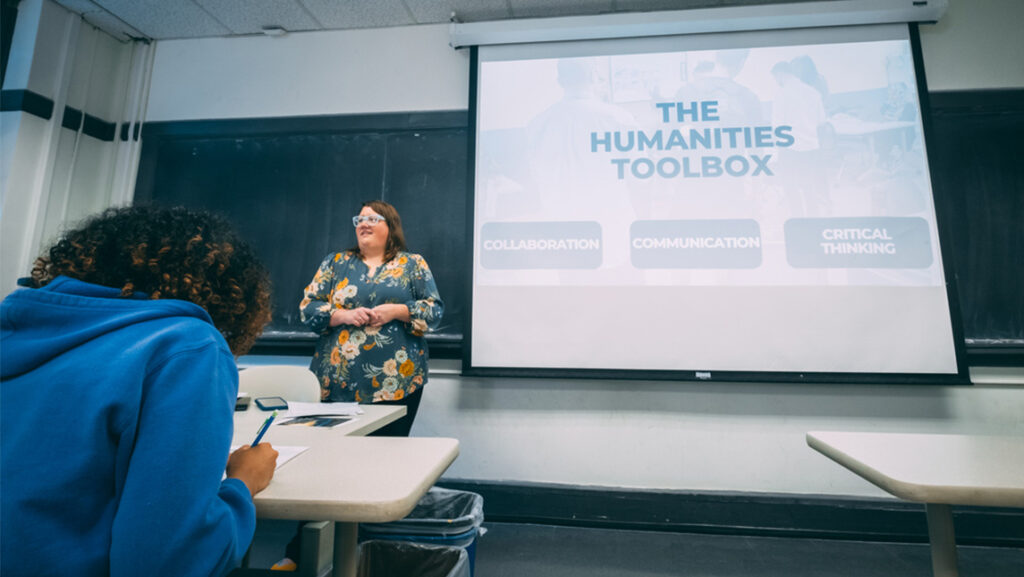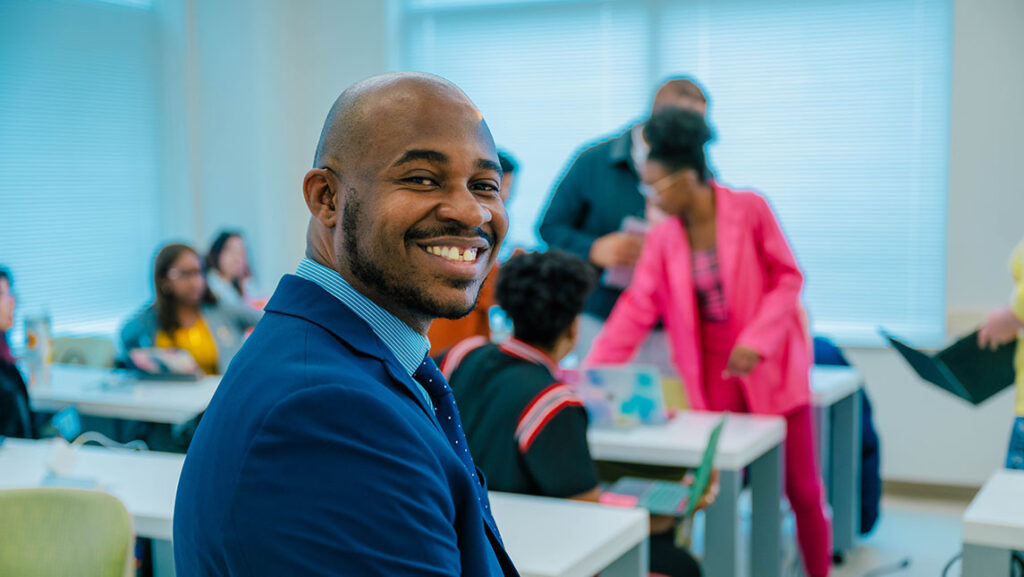Repost from UNCG Now
Article by Lanita Withers Goins
It’s one thing to devote your professional career to studying anti-poverty measures. It’s something else to feed your research to your teenage children.
Unless you’re UNCG economics professor Dr. David Ribar. In a quest to discover if the federal government’s Thrifty Food Plan, designed to help impoverished families stretch their food budget, was realistic, he’s twice enlisted his family to try it out.
“You can motivate some really good behavior with your children by threatening them with turkey cabbage casserole,” he said with a smile.
The family experiments personalized the research that has been the hallmark of Ribar’s academic career. For more than two decades, the economist has studied the impacts of anti-poverty initiatives — everything from participation in food stamp programs to childcare initiatives and welfare reform. Earlier this year, he was invited to present research on childhood hunger and federal policy to the National Academy of Sciences.
His years of anti-poverty research have been fueled by a desire to understand the issues and inform possible solutions.
“Nothing motivates more than finding out that you didn’t know what you thought you knew,” Ribar said. “I’ve been very interested in what exactly food hardships are, how they are distinct from poverty, how they do and don’t respond to programs.”
He’s found the issue isn’t as cut-and-dried as many would believe. “A crazy thing associated with the United States measure of food hardships — the food insecurity scale — is that it’s probably underreported at the low end,” he explained. One researcher studied how people reported their level of hardship at different levels of food consumption. “You’d expect, at low levels of food consumption, everyone would be reporting hardships.”
But only about 40 percent of people reported hardships, the study found, much lower than what researches expected. They attributed part of the difference to social desirability bias. “If you ask me about hardships and I answer, it might be perceived as an admission of failure or incompetence, especially if you ask me about a hardship that involves my children and not being able to feed my children,” Ribar explained.
“All these puzzles in studying food insecurity make for lots of fun for a researcher,” he added.
In 2009 and again in 2012, Ribar enlisted his family to test the feasibility of living on the federal government’s Thrifty Food Plan. Once, the Ribars followed the budget and recipes outlined in the plan; the other time, the family used the budget as the constraint but gave themselves the flexibility of picking their own menus.
“One of the things I wanted to look at was if the menus that were in the cookbook could actually be produced with the amount of money consistent with the Thrifty Food Plan,” he explained. “If you follow the cookbook, could you do it on the budget? And if you did that, how much time would it take up?”
At the end of the experiment the family found they had more month than money — and a greater understanding of the how one mishap can mean the difference between enough and hunger.
“To fix meals that way, there’s no margin for error. We used almost every penny of the budget to come up with meals, and if anything had gone wrong, we would have been in really bad shape. If we had burned a dinner. If ants had gotten into our pantry or something happened with the utility bill where the fridge was turned off. Or if one of the teenagers decided to have one of their friends over and they’d eaten things we’d intended to have for dinner. Any of those things, on that budget, would have been a calamity.”
That understanding, combined with years of study, informs his research. Ribar hopes it also informs others.
“I hope (my work) leads to more workable and more efficient policies,” he said. “I hope that it leads to people understanding the needs and constraints of the poor a little bit better.”
Photography by David Wilson, University Relations


